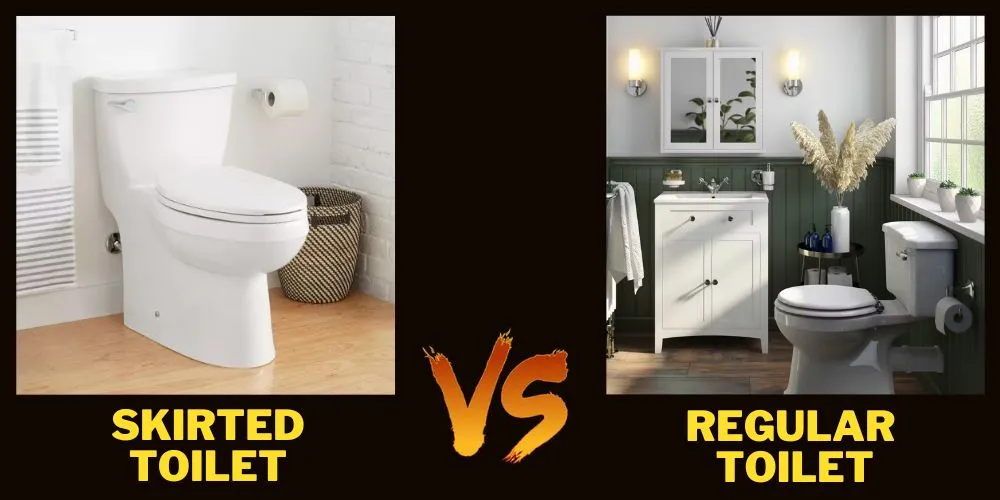An overflowing toilet is a household emergency that many of us hope to never face. Yet, it’s a common issue, arising from various reasons such as clogs, sewer line problems, and malfunctioning toilet parts.
This guide aims to arm you with knowledge and steps on what to do if your toilet overflows. We would address if you should encounter this messy problem right away.
It also covers how to prevent future incidents, ensuring your home remains sanitary and safe.
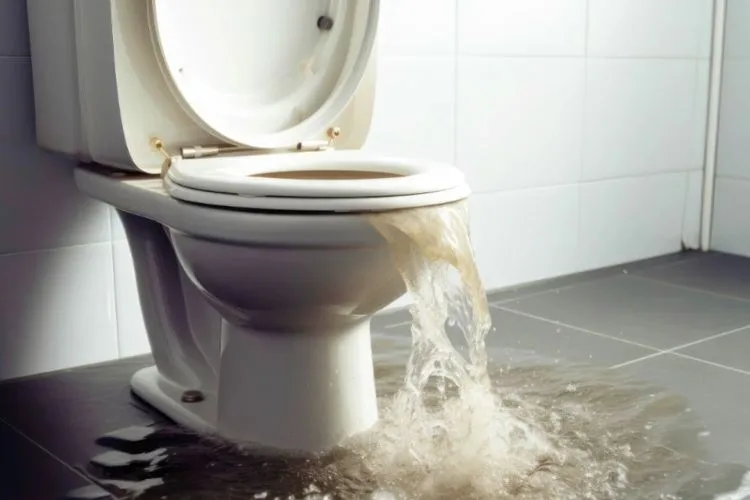
What To Do If Your Toilet Overflows?
Stop the Flow of Water
The first step in managing an overflowing toilet is to halt the water supply. You can do this by locating the water valve behind the toilet. Turn it clockwise until the water stops running.
This action prevents additional water from entering the bowl and exacerbating the overflow.
Mop Up Overflow
After stopping the water, your next focus should be on cleanliness and safety. Donning gloves, use a mop and bucket to clean the spilled water. This not only prevents slipping but also minimizes water damage. Applying a disinfectant eliminates bacteria, reducing health risks from the overflow.
Diagnosing the Problem
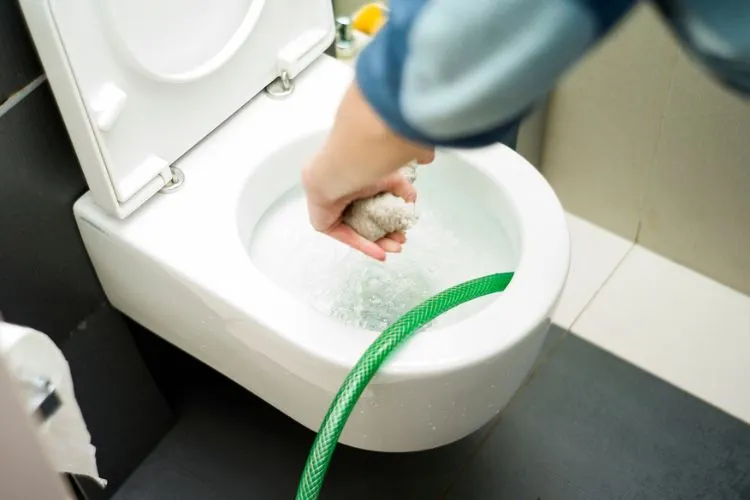
Check for Simple Clogs
In many cases, a plunger can resolve the issue. Effective use involves creating a seal over the toilet’s drain hole and applying firm, yet gentle pressure. A pro tip is to ensure you have a flange plunger, as its design is particularly suited for toilets. Proper technique can often dislodge the blockage, solving the problem.
Inspect for Other Issues
Sometimes, objects that shouldn’t be flushed cause clogs. If visible and safe to reach, remove these objects. Also, inspect the toilet flapper. It might not fully open during flushing, leading to incomplete flushes that do not clear the bowl.
Advanced Troubleshooting
Use a Toilet Auger
For clogs deep within the toilet, a toilet auger is the next level of defense. This tool reaches farther than a plunger. By inserting the auger into the drain and twisting, you can often break up or retrieve the obstruction. Care is needed to avoid damaging the toilet.
Assess the Sewer Line
Some overflows result from broader issues beyond the toilet, such as sewer line problems. Signs include water backing up in other drains. This situation likely requires professional intervention.
When to Call a Professional
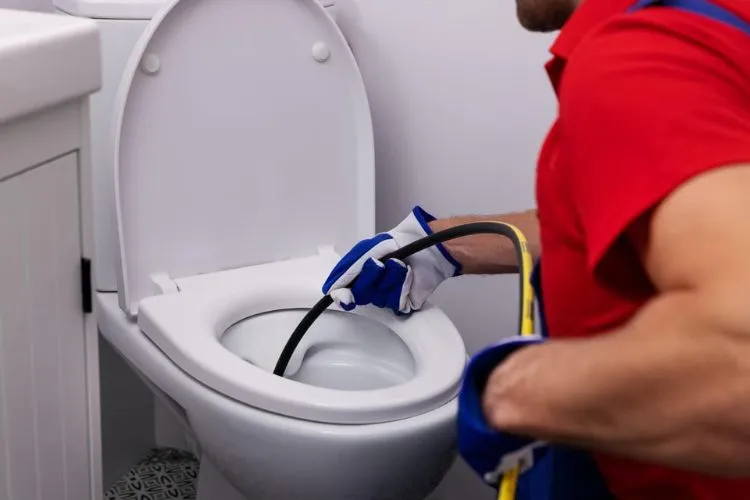
Persistent problems or evidence of a larger issue, like sewage backup, call for professional help. Experts provide services that go beyond what homeowners can safely handle.
Finding a reputable plumber means looking for those with good reviews and proper certification.
Prevention Tips
Regular Maintenance
Regular checks can prevent many toilet overflows. This includes inspecting the flush mechanism and clearing any minor clogs before they worsen. Simple household habits, like not using the toilet as a trash bin, play a significant role in preventing blockages.
What Not to Flush
Educating everyone in the home about what should not be flushed is vital. Items like wet wipes, feminine hygiene products, and paper towels lead to most clogs.
Keeping a trash bin nearby encourages proper disposal.
The Cleanup Process
Sanitizing the Area
After dealing with an overflow, cleaning and sanitizing the area is crucial. Use bleach or another disinfectant to thoroughly clean surfaces. This step ensures that any bacteria from the overflow do not pose a health risk.
Dealing with Water Damage
Sometimes, overflows lead to significant water damage. When this happens, water damage restoration professionals can dry out the affected areas, preventing mold and further damage.
Long-Term Solutions and Upgrades
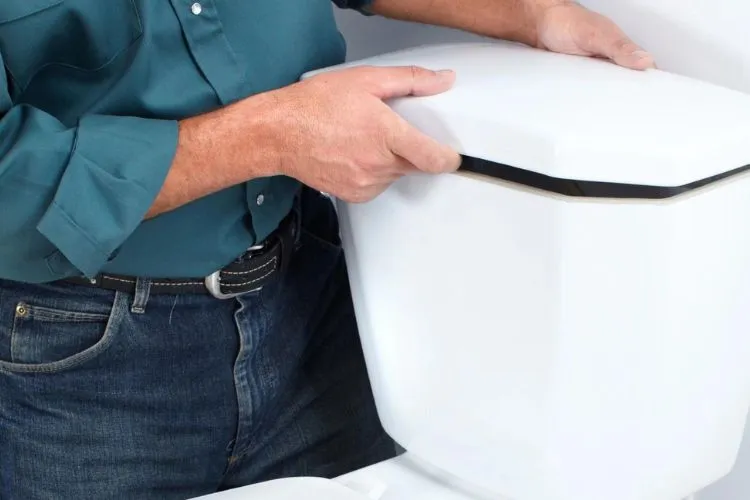
To mitigate the risk of future toilet overflows, consider investing in long-term solutions and upgrades. One effective option is to install a high-efficiency toilet with a dual-flush mechanism, allowing you to choose a lesser or greater volume of water depending on waste type.
These models are designed to reduce clogging and save water, offering both economic and environmental benefits. Some toilets come equipped with overflow protection features that prevent water from spilling onto the floor.
Additionally, you can retrofit your existing toilet with more advanced flush valves or converted to a pressure-assisted flush system for more power in clearing the bowl, thereby reducing the likelihood of clogs and subsequent overflows.
Investing in these upgrades not only enhances the functionality of your bathroom but also contributes to a more sustainable household.
Legal and Health Regulations
Homeowners and landlords must comply with local health and safety regulations when addressing sewage overflows, ensuring timely cleanup and repair to avoid health hazards.
Regulations often mandate professional assessment and remediation to protect occupants from exposure risks.
frequently asked questions
u003cstrongu003eWhat should I do if my toilet overflows at night or during holidays?u003c/strongu003e
First, follow the immediate action steps to stop the water and clean up. If the problem persists and you cannot fix it, consider calling an emergency plumber.
Can a repeatedly overflowing toilet indicate a bigger plumbing issue?
Yes, it can signal deeper issues like sewer line problems. If simple fixes don’t work, it’s time to call a professional.
What are the health risks associated with an overflowing toilet?
An overflow can expose you to harmful bacteria and viruses. Proper cleanup and sanitization are crucial to minimize health risks.
How can I temporarily prevent overflow while waiting for professional help?
After shutting off the water, avoid using the toilet until help arrives. If you have another bathroom, use that instead.
Are there any home remedies or DIY fixes for minor clogs?
Yes, a mixture of hot water, baking soda, and vinegar can sometimes clear minor clogs. However, be cautious with commercial chemical cleaners as they can damage pipes.
Conclusion:
Facing an overflowing toilet can be daunting, yet with the right knowledge, you can handle it with confidence. Immediate action to stop the water, followed by cleaning and troubleshooting, can often resolve the issue.
Remember, prevention through regular maintenance and proper disposal habits is key. By understanding these steps and preparations, you can avoid the stress and damage an overflowing toilet can cause.


